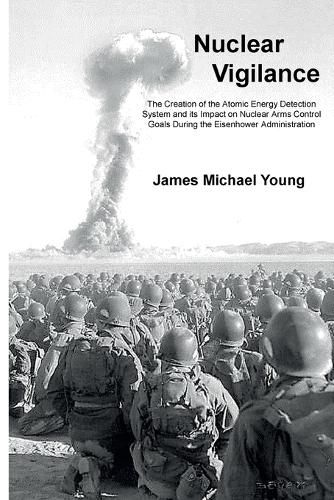Readings Newsletter
Become a Readings Member to make your shopping experience even easier.
Sign in or sign up for free!
You’re not far away from qualifying for FREE standard shipping within Australia
You’ve qualified for FREE standard shipping within Australia
The cart is loading…






This title is printed to order. This book may have been self-published. If so, we cannot guarantee the quality of the content. In the main most books will have gone through the editing process however some may not. We therefore suggest that you be aware of this before ordering this book. If in doubt check either the author or publisher’s details as we are unable to accept any returns unless they are faulty. Please contact us if you have any questions.
In 1945, the United States exited the Second World War as the sole possessor of nuclear weapons. As the Cold War began, tensions between East and West mounted when communist expansionism quickly spread throughout Eastern Europe. By 1946, the most important national security question was: when would the Soviet Union acquire a nuclear capability? With U.S. human intelligence assets incapable of penetrating the secretive Soviet nuclear weapons program, America's political and military leaders turned to technology to answer the question. In 1947, the U.S. Air Force assumed responsibility for creating a system capable of monitoring any nuclear detonation within the Soviet Union. Uncertainty about Soviet nuclear advancements compelled the Air Force to staff a small, highly classified unit with some of America's most talented scientists. These people were experts in the fields of seismology, nuclear physics, radiochemistry, acoustics, atmospheric sciences, and several other geophysical disciplines. The result was the creation of the Atomic Energy Detection System (AEDS). In 1949, the Soviet Union conducted its first nuclear weapons test. The AEDS, while still under development, detected the detonation. This success immediately validated the Air Force's Long Range Detection (LRD) mission. From that point on, and throughout most of the 1950s, the AEDS became the nation's primary surveillance system for monitoring nuclear weapons testing. This first part of the narrative details how the Air Force embraced unprecedented levels of innovation to harness new sciences for the invention of instruments capable of conducting LRD. The second part reveals how LRD scientists played a key role in nuclear treaty negotiations during President Eisenhower's second term in office. Their direct involvement resulted in the derailment of Eisenhower's strong attempt to negotiate a comprehensive nuclear test ban treaty with the Soviet Union.
$9.00 standard shipping within Australia
FREE standard shipping within Australia for orders over $100.00
Express & International shipping calculated at checkout
Stock availability can be subject to change without notice. We recommend calling the shop or contacting our online team to check availability of low stock items. Please see our Shopping Online page for more details.
This title is printed to order. This book may have been self-published. If so, we cannot guarantee the quality of the content. In the main most books will have gone through the editing process however some may not. We therefore suggest that you be aware of this before ordering this book. If in doubt check either the author or publisher’s details as we are unable to accept any returns unless they are faulty. Please contact us if you have any questions.
In 1945, the United States exited the Second World War as the sole possessor of nuclear weapons. As the Cold War began, tensions between East and West mounted when communist expansionism quickly spread throughout Eastern Europe. By 1946, the most important national security question was: when would the Soviet Union acquire a nuclear capability? With U.S. human intelligence assets incapable of penetrating the secretive Soviet nuclear weapons program, America's political and military leaders turned to technology to answer the question. In 1947, the U.S. Air Force assumed responsibility for creating a system capable of monitoring any nuclear detonation within the Soviet Union. Uncertainty about Soviet nuclear advancements compelled the Air Force to staff a small, highly classified unit with some of America's most talented scientists. These people were experts in the fields of seismology, nuclear physics, radiochemistry, acoustics, atmospheric sciences, and several other geophysical disciplines. The result was the creation of the Atomic Energy Detection System (AEDS). In 1949, the Soviet Union conducted its first nuclear weapons test. The AEDS, while still under development, detected the detonation. This success immediately validated the Air Force's Long Range Detection (LRD) mission. From that point on, and throughout most of the 1950s, the AEDS became the nation's primary surveillance system for monitoring nuclear weapons testing. This first part of the narrative details how the Air Force embraced unprecedented levels of innovation to harness new sciences for the invention of instruments capable of conducting LRD. The second part reveals how LRD scientists played a key role in nuclear treaty negotiations during President Eisenhower's second term in office. Their direct involvement resulted in the derailment of Eisenhower's strong attempt to negotiate a comprehensive nuclear test ban treaty with the Soviet Union.